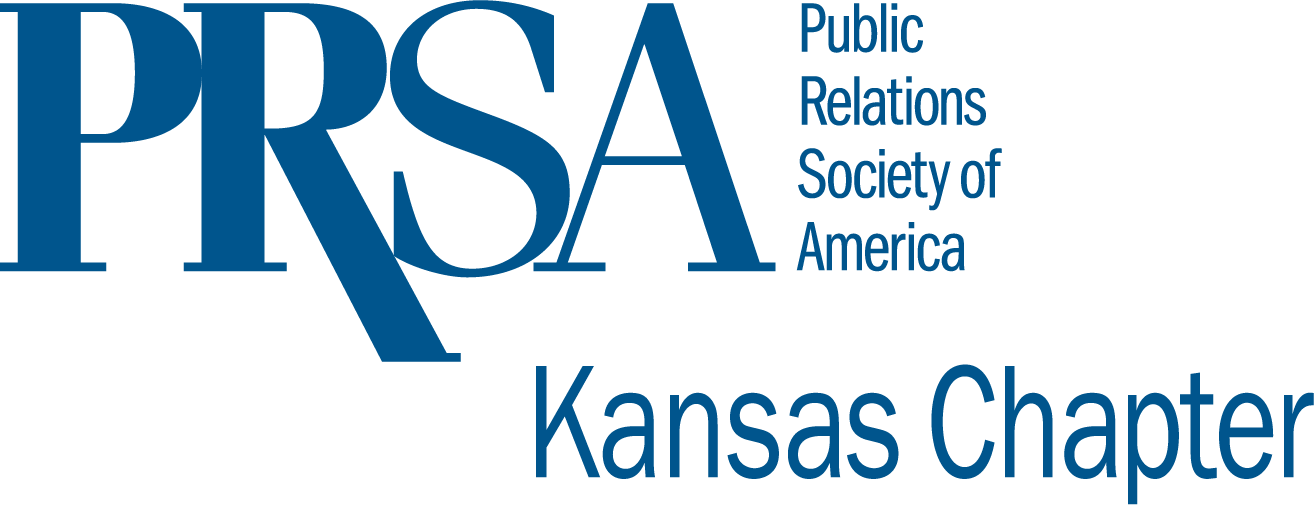by | Apr 29, 2018 | Food for thought
By Jamie Opat, PRSA Kansas Ethics Chair
Disclosure. As public relations professionals, we represent publics that expect and demand full information. As PRSA members, we follow an ethical code of conduct that addresses disclosure as a way to build trust and to foster good decision making.
What if the full truth cannot be shared right now? How can you placate the attorney advising your organization to filter all statements through him or her before you share them with the media?
This is an opportunity for you, the PR professional, to counsel your bosses, your board and your shareholders that truth is imperative and not always perfectly timed. Delays, silence, sins of omission – these will erode trust in your reputation that can be hard to regain.
The people who need the information first – those in your inner circle of stakeholders – always deserve the chance to have and digest those facts before they are widely shared. The practices of HOW you share information with the greater public – for example, news releases at 5 p.m. on Fridays – will also be evaluated for their transparency.
PRSA’s code provisions related to the Disclosure of Information remind us to be honest and accurate, to quickly correct errors, to ensure that those you represent are releasing truthful information, to reveal sponsors for causes and interests and to avoid deception.
Pretty straightforward, right? That is, until you notice an error in a media kit but fail to correct it. Or employ people who appear publicly as volunteers for a grassroots cause.
In a world of shrinking transparency (who really sponsors that social media ad campaign?) we as current practitioners should serve as an ethical touchstone for a new generation of professionals.
For more information, visit the Ethics section on the prsa.org website.
Reach Jamie at: jopat@starkey.org | Twitter | LinkedIn
by | Mar 15, 2018 | Chapter events, Food for thought
By Susan Dyer, PRSA Kansas PR Chair
During our last PRSA chapter meeting, we watched a webinar about Snapchat, PR in a Snap (PRSA log in required to view the webinar), one of the latest shiny objects to hit the social media landscape.
During the webinar, the presenters mentioned key takeaways for using Snapchat. Among the ones they discussed, here are three of them.
- Be human.
- Provide content that engaging, entertaining and educational.
- Remember who your audience is.
Aren’t those the key to any great content? It shouldn’t matter what platform or channel you are using…your brand should always be human and provide valuable content to a relevant audience.
Be Human.
In this Strategies + Tactics article, “6 Ways to Create Brand Stories That Connect With Audiences,” author Malayna Evans says, “Write in a real, human, sharing-a-beer voice. Stay away from jargon such as abbreviations, acronyms and buzzwords. Remember that gray, boring corporate-speak is a turnoff to readers and listeners.”
The goal of any writing should be to make the reader feel smart, not to make you sound smart. If you use simple terms and sound like a person, you’ll connect with your audience and build trust.
Engage, Entertain, Educate.
Your content should inspire your audience, provide entertainment or offer advice or information. If it doesn’t, why are you writing it?
Remember who your audience is.
If your audience is teenagers, your content will sound different than if you are reaching retirees, and your communication channels will differ too. Gifs, memes and Snapchat might catch a teen’s attention, while an email with a link to a simple infographic might be best for retirees.
Whether you’re writing an op-ed, creating a video, or posting on social, your messaging should connect with your readers (or viewers), sound like an actual person and offer some kind of value.
Contact Susan at: sdyer@heartlandcua.org | Twitter | LinkedIn

Recent Comments